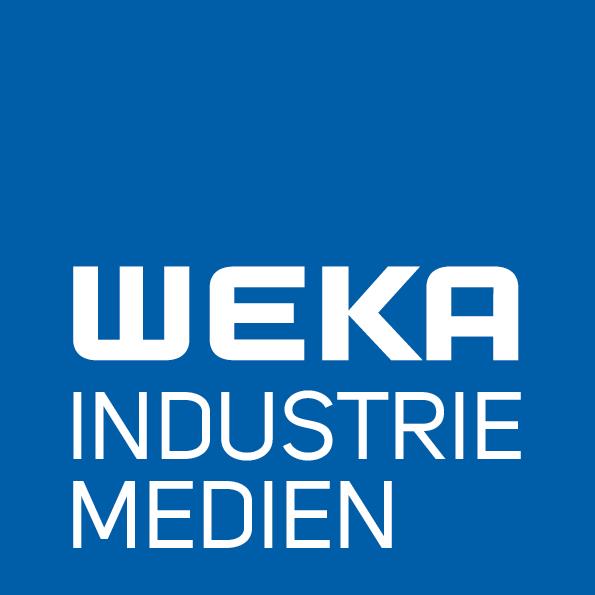Where to go with tight advertising budgets?
Seven decision-making aids
Advertisers are always faced with the question of how to use their funds most effectively. In times of tight budgets, the decision is particularly difficult, because every misinvested euro hurts twice.
So what to do: print or online? As many channels as possible or focus on the essentials? Personalise or distribute widely?
Studies indicate that all these questions are important, but not decisive for the game. Credibility and target group proximity, on the other hand, prove to be game-changing. They are the most reliable factors in finding the right forms of advertising for a specific campaign. Our current white paper, which you can download here, reveals how this works. here can download.
1. does print make sense?
Is it still worth investing in print advertising? The question has been discussed among advertisers for at least twenty years. But in the end, the answer is clear: Yes, it is worth it.
What's more, many things point to a revival of print. In France, for example, between 2017 and 2020, the amount of time readers spend consuming print media per day has increased by increased by almost a third, in Great Britain by a quarter. In Austria, a country that has traditionally had a Very high print content many traditional journals and trade magazines have themselves achieved circulation increases in the 2020 pandemic year.
This is only surprising at first glance. Because as the current Reuters Insititute Digital News Report proves: In times of crisis, media consumers increasingly go where they assume competence and expertise. Which is good news for advertisers. Because advertising in media that are seen as trustworthy and competent works significantly better.
2. credibility as a core criterion
The Frankfurter Allgemeine Zeitung, the Süddeutsche Zeitung, the Handelsblatt and the Zeit have shown how much credibility and trust are the main criteria for advertising effectiveness. in a joint study was shown. The reaction to advertisements was measured in a neutral environment and in an environment positively branded with the names of the named media. In a neutral environment, an average of 62 per cent of respondents rated an advertisement positively; in a branded environment, the proportion rose to 79 per cent.
An interesting detail on the side: if the advertising messages were integrated into an online version of the medium and viewed on the desktop, the positive ratings increased by 16 per cent. If print was used as a channel, the effect was more than twice as strong at 33 per cent. When using mobile devices, however, there was even a 37 percent increase. Which leads to the conclusion: The question of whether print or not is ultimately secondary. What matters much more is whether a medium can be considered reliable.
Free downloadable guide to assessing the quality of a medium
3. which advertising environment is perceived as credible?
It is a pradox that can be observed worldwide as well as in Austria: the consumption of social media is increasing from year to year, whereas the trust in the content that is disseminated there is decreasing. Based on current figures: Worldwide, 55 per cent of people use social media as a source of information, but only 22 per cent trust it.
Trust in professional news channels, on the other hand, is much higher: 38 per cent worldwide, 40 per cent in Austria and 45 per cent in Germany. The mere fact that there is an editorial team of some kind behind a medium massively increases its credibility.
Communication scientists speak of a gate-keeper effect in this context: even if journalists are sometimes accused of bias, sensationalism and lack of seriousness: All in all, people trust that journalists are better than lay people at separating the important from the unimportant, the true from the false. By the way, print benefits from this effect in particular. Its trust advantage over other media is 25 per cent, according to a recent survey by the US consulting firm Kantar.
4. trade media offer credibility and networking at the same time
If it were only about reaching the target group as precisely as possible, the entire advertising industry would only work online. This is because cookies, the analysis of user behaviour and algorithms can be used to target customers much more precisely in the online world than in the analogue world. Taken to the extreme, this leads to personalised newsletters in which the potential buyer is offered exactly what he is interested in.
Sounds convincing, if there weren't a big but: personalised advertising sucks. So much so that 39 per cent of users explicitly reject them and accordingly quickly wipe away. It is also, because it usually lacks a serious environment, very easy to recognise as a clumsy sales attempt.
But that's exactly what most customers don't want. So what to do? How to combine target group security with the advantages of a credible editorial environment? Trade media often offer an ideal solution. They combine the best of both worlds: They address the exact industry-specific target group that advertisers want to reach and at the same time convey professional competence.
Accordingly, in a survey of SMEs, a frequent target group in B2B business, 70 per cent of respondents said that they use advertising, which thematically fits the medium, find more credible. This is also because specialised media speak the language of their target group and thus automatically enjoy an advantage in terms of trust. Advertising that does not fit the medium, on the other hand, feels 79 per cent of respondents harassed.
5. recognise and use quality
Credibility is logically related to quality. In almost all surveys, users associate quality with some particularly important core features. Journalistic independence ranks very high in this respect. And with it, foresight. The more points of view a medium offers on a topic, the more different experts it allows to have their say, the better it performs in quality rankings.
In the case of trade media, there are a number of additional factors - such as reputation within the industry. Many titles are hardly known to a larger audience, but nevertheless have a high advertising impact because they have developed into a leading publication for certain areas. They also deliver exactly the content that readers want.
This is an important point. Because Media users tend very strongly to judge products that meet their expectations as being of higher quality. So if the aim is not to reach a mass audience but to address industry-specific decision-makers, trade publications are particularly well suited for this. Incidentally, the retention rates in long-term memory are also impressive: they are higher when reading magazines. 42 per cent better than consuming social media and 21 per cent better than consuming random web content.
6. print helps to generate dwell time
The complaint that mobile media use and the constant availability of social media have dramatically reduced users' attention spans is not new. Just how dramatic the ephemeral nature of media content has now become is shown by the graphs of @LoriLewis and @OfficiallyChadd. Year after year, the two compile what happens within just 60 seconds in the infinite communication spaces of the internet. And so in 2021, every minute, among other things: 21.1 million text messages are sent, 69 million posts are made on WhatsApp and Facebook Messenger, 414,764 apps are downloaded and 197.6 emails are written.
The hustle and bustle of the new media world hardly leaves any time left over for a longer engagement with the content presented. Print, however, is reassuringly old-fashioned in this context. A recent survey from Great Britain shows that readers of print stay with the texts offered to them twice as long as users of online channels.
If consumers read a newspaper on a tablet, smartphone or desktop, the usage time is between 52 to 54 minutes per issue. If read on paper, the dwell time increases to 1 hour and 40 minutes. It is obvious that advertising is better received in such an environment. A medium that conveys information instead of mere entertainment has a similarly positive effect. In such formats, an advertisement is on average perceived by about a third longer than in media that serve only to entertain.
7. beware of blind spots
Like all people, advertisers have their blind spots. Sometimes they are guided by ideas rather than facts. Or they cling to ideas that became fashionable at some point without standing up to empirical scrutiny. For example, a recent study by the US consultant Kantar shows that consumers and advertisers have completely different ideas about the advertising suitability of individual media.
Weavers consider online videos, TV spots and entries on social media channels to be the most effective forms of advertising. Consumers, on the other hand, when asked which form of advertising they are most comfortable with, answer with: Cinema spots, advertising at events and Advertisements in print magazines.
This not only shows that advertising in print media - and here especially in the quality sector - enjoys a high level of acceptance, it also shows that consumers want to protect their privacy. They reject advertising that intrudes into this sphere without being asked. Accordingly, they also give 42 per cent of social media users say that there is too much unwanted advertising content on the various channels. gives.
Many advertisers overlook this if they only have target group accuracy in mind. They also overlook the fact that even the best influencers can never achieve the same level of trust with the audience as strong media brands. Because the Reputation of a medium and the journalists working in it is still the main criterionfrom which users infer the reliability of a medium.
QUICK-CHECK
How good is my advertising partner?
As a rule, entrepreneurs and advertisers know the media in which they place their messages well. However, if you want to get a quick overview of how well a medium scores on the quality scale, you can do so using the following points.
1) Texts identified by name
Texts without an author's name do not necessarily have to be unserious. However, texts marked with the author's name have the advantage that the reader can more easily find out about the author's background if necessary.
2) Premium content
The more own contributions a medium provides, the higher its quality standards are, as a rule. Especially online, there are many platforms that almost exclusively recycle existing texts. Behind such projects there are rarely demanding editorial teams.
3) Perspective
Quality media usually present several points of view on a specific topic. If only one opinion is explicitly represented, it is marked as such, for example by naming the text in question as a commentary, debate contribution or similar.
4) Networking
With social media, a look at the shared content can be helpful, with online media at the linked pages. The general rule is: reputable media usually share reputable sources, while dubious media also link to dubious content.
5) Relevance
The question of whether a medium is considered relevant by the target group is not directly related to quality, but to advertising effectiveness. Most of the time, weavers know this anyway. Otherwise they can get an idea from the media data or in direct conversation with potential customers.
Authors: Piotr Dobrowolski and Martin Mock











